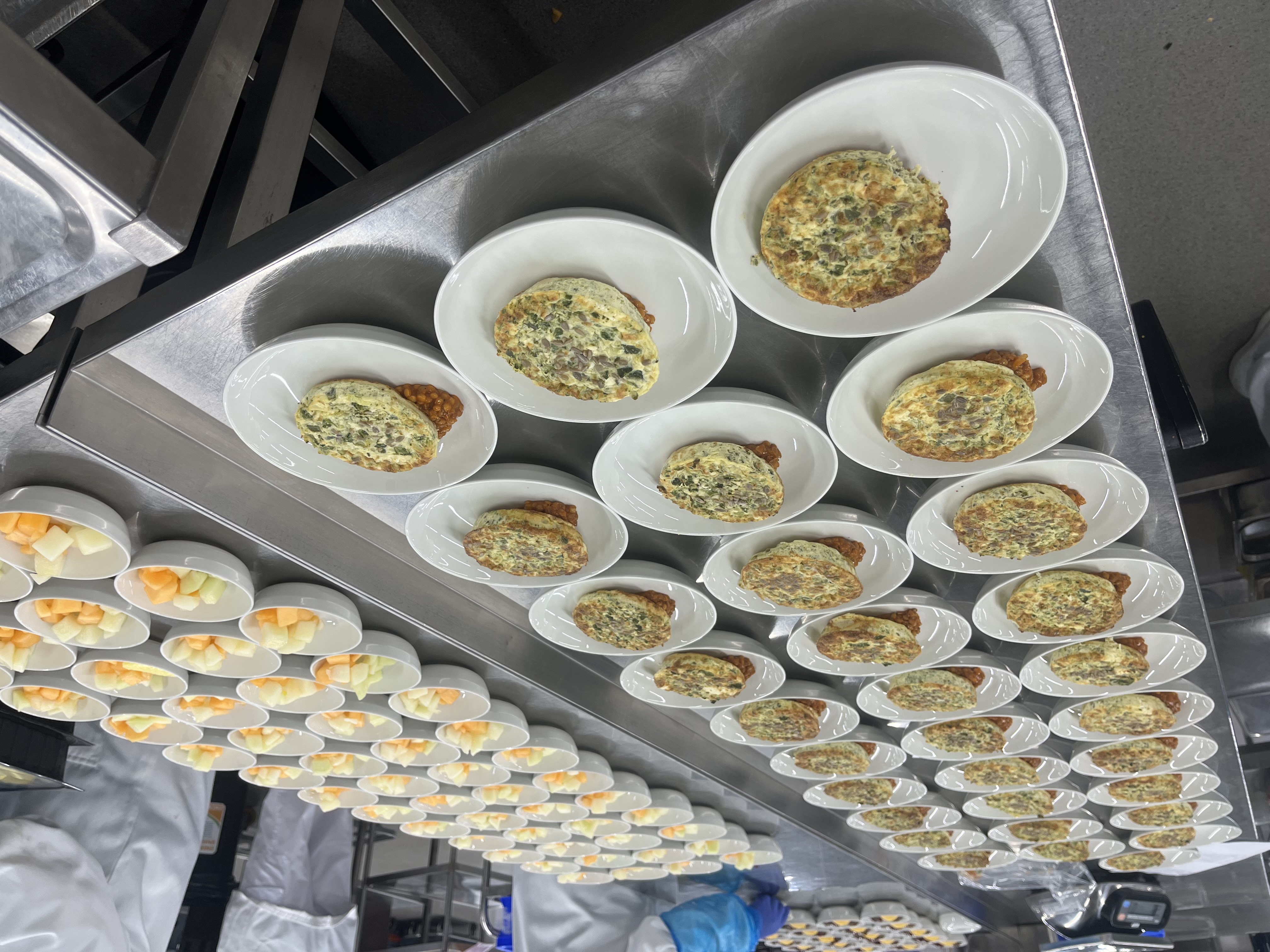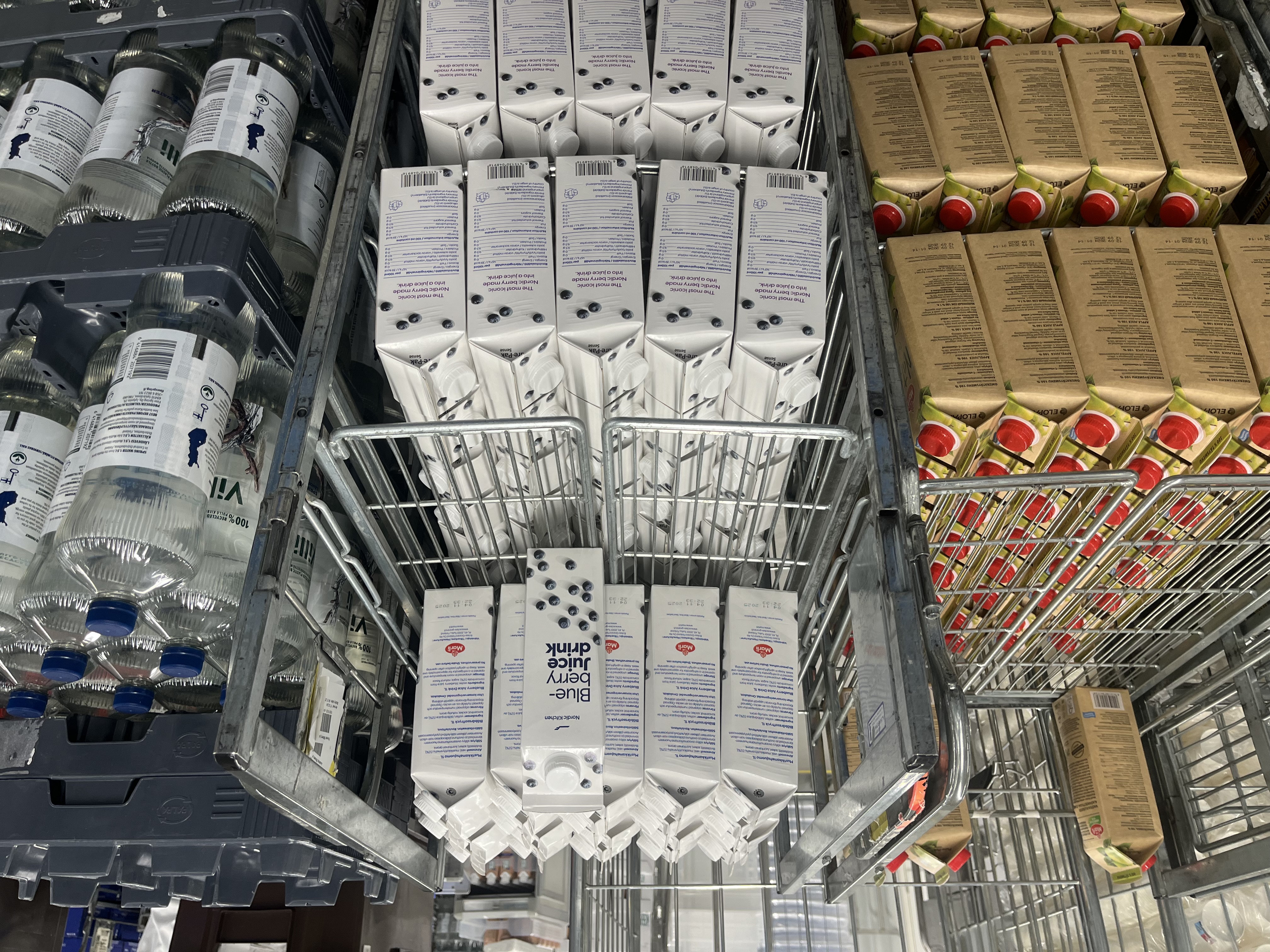Caviar, wines and lots of chicken: the era of « flying » restaurants started on board the planes

Lufthansa and Emirates are the main buyers in the world of fish eggs. Many vectors focus more and more on exclusive and personalized products. But behind meals on the plane there is a long and attentive processing
In one year Finnair serves a million liters of its famous blueberry juice. While Emirates first -class customers devour over 10 thousand kilograms of caviar. A number that approaches those of Lufthansa who has long since sported the scepter of the main consumer of fish eggs in the world, buying for its premium travelers more than 5% of the overall quantity. Of course, those who sit in economy is not as pampered as the ones in front.
Inside the kitchens
Feed hundreds of thousands of people every day, at 10-12 thousand meters above sea level, « is one of the most challenging activities », he explains to Courier Jaakko Koivusaari, Finnair Kitchen’s Head of Food Production Operations, the Kitchens of the Finnish carrier, while accompanying us between trolleys and trays, files of dishes to be filled and giant trays. On the outskirts of Helsinki 360 people work who prepare 7,500 meals per day, plus another 500-600 « special », for those who in short have intolerances and particular allergies and requests.

A billionaire business
High altitude catering is a multimiliary business. There are companies that have internal kitchens – such as Finnair or Emirates notes – and others that use dedicated companies with offices everywhere, such as Gourmet, Do & Co, Dnata, LSG, Servair. Emirates Flight Catering prepares on average 225 thousand meals per day for Emirates and another hundred customers. Economy class meals can cost AVIOLINEA between 5 and 15 euros, those of business 30-50 euros, to climb to 100-300 euros for those of First Class.
From packaging to packaging
Before a tray is given to a passenger, numerous work phases are needed: the planning of the recipe, the preparation, the measurement of the temperature, the cleaning of the furniture, the packaging and the load. Planning takes into account the countries of destination of flights, but for years a dish has been reigning a dish for years: the meatballs with potatoes. In general, meals are generally seasoned because flavors are reduced by climbing altitude, but without exaggerating too much – for example – with salt.

The « cold chain »
All the companies and catering companies pay close attention to the « cold chain »: it must never stop until the plane, so much so that the temperature-which must not exceed 10-12 ° C-is measured along the route. Only on board the crew can heat the food in the ovens. What happens if there is a suspicion that a passenger felt bad because of the food served during the flight? « During the distribution phase, a sample dose then frozen and kept for 2-3 weeks is taken from each lot, » explains Kivusai of Finnair. If the sample should be necessary « it is analyzed in a laboratory ».
The meals served
A large number of food travels on planes. A thousand meals can also be served on an intercontinental flight, obviously depends on the length of the trip, the cabin and the type of aircraft. On the Dubai-New York flight that Emirates operates with the Airbus A380-the largest passenger aircraft-you eat a couple of times in the thirteen hours, net of the snack. Considering that there are 14 first -class suite, 70 business and over 400 economy seats here 500 meals are served for each lap.

Potatoes, salmon and desserts
It is no coincidence that Emirates, which has only large aircraft in fleet (A380, Boeing 777 and the latest arrival, the Airbus A350) during a year serves 6 million kilos of chicken, 350 thousand kilos of beef, 266 thousand kilos of Atlantic salmon fillets, 2.2 million kilos of potatoes, 1.7 million chili of pasteurized eggs and 3.1 million chili Sweets, in addition to thousands of vegan and vegetarian meals. The luckiest – that is, those who sat in the best armchairs – used 3.5 million bottles of olive oil and balsamic vinegar, ate 14 thousand kilos of Australian cheese and 1.2 million beef fillet steaks.





:format(webp)/s3/static.nrc.nl/wp-content/uploads/2024/04/05161403/data113895342-3a91e5.jpg)


